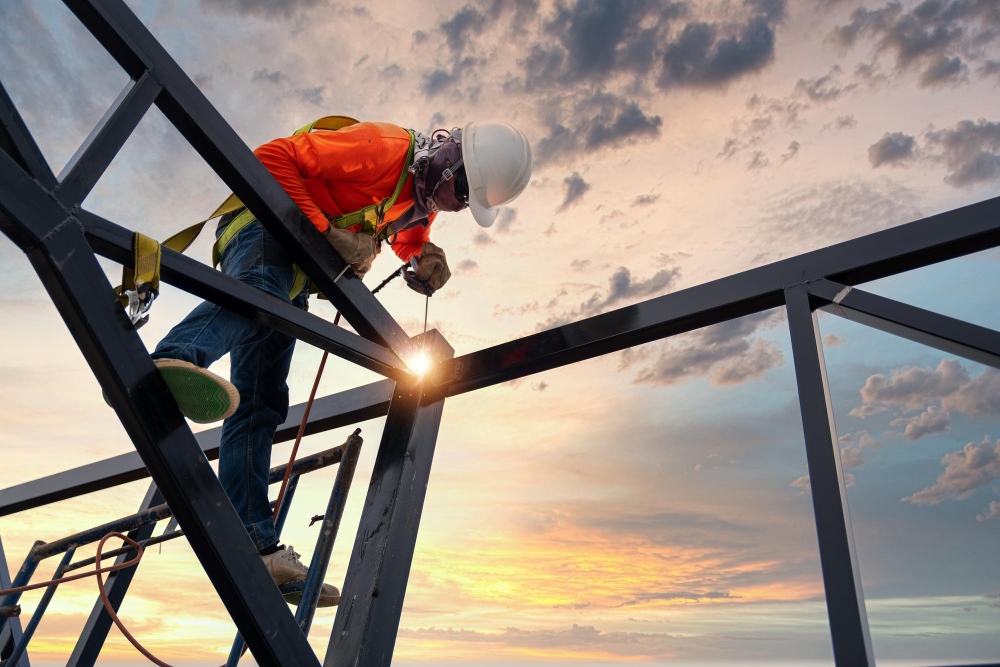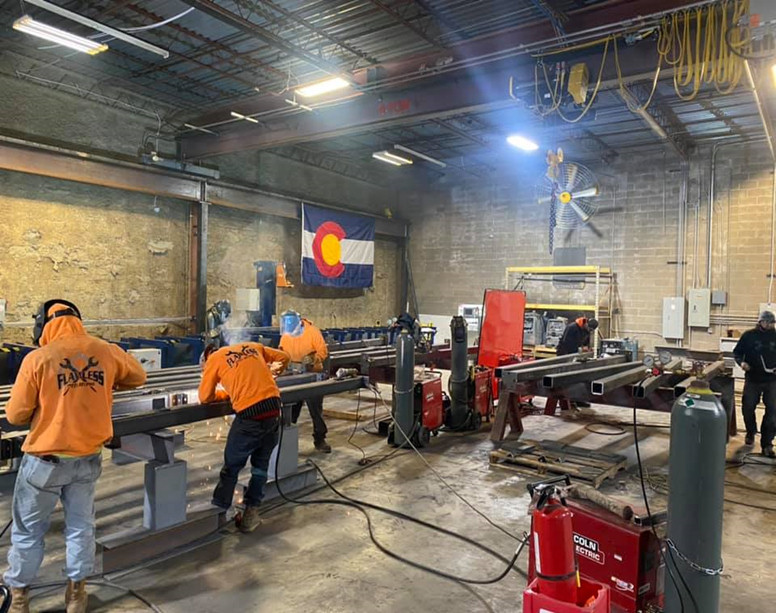Metal Fabrication Melbourne: Precision Design for All Requirements
Metal Fabrication Melbourne: Precision Design for All Requirements
Blog Article
The Ultimate Manual on Customized Steel Fabrication Solutions for Structural Projects
In the world of architectural projects, the relevance of customized steel construction services can not be overemphasized. From the fundamental understanding of steel fabrication basics to the intricate process of choosing the most suitable products, every step in this journey plays a crucial role in the utmost success of a task. As we browse with the complexities of layout factors to consider, construction procedures, and quality assurance procedures, a detailed handbook serves as a guiding light for experts seeking excellence in steel fabrication options. Stay tuned to discover the understandings that can change the means architectural jobs are approached and performed.
Comprehending Custom-made Steel Fabrication Essentials
Exploring the fundamentals of personalized steel manufacture provides insight right into the complex procedure of changing raw steel into customized structural parts. Personalized steel fabrication is a specific production strategy that involves cutting, shaping, and constructing steel products to develop distinct frameworks according to certain task demands. Understanding the fundamentals of custom steel manufacture is critical for guaranteeing the successful execution of architectural projects.
The process generally begins with the analysis of job specs and style needs. This first phase includes thorough preparation and partnership between developers, designers, and fabricators to establish the most suitable approach for producing the steel elements. Accuracy is essential throughout the manufacture process, as even minor discrepancies can impact the architectural honesty of the end product.
Different strategies, such as reducing, welding, and shaping, are employed to transform raw steel into the desired structural components. Competent fabricators use sophisticated machinery and devices to make certain accuracy and consistency throughout the manufacture process. Quality assurance measures are executed to validate the stability of the produced components prior to they are assembled on-site, making sure compliance with industry requirements and project specifications.
Picking the Right Steel Materials

Firstly, the type of structural project and its particular demands play a crucial role in identifying the most ideal steel materials. Aspects such as the load-bearing ability, environmental problems, and preferred lifespan of the structure will certainly determine the grade and sort of steel that must be made use of.
Moreover, the physical buildings of the steel, including toughness, ductility, and weldability, must line up with the project's needs to ensure ideal efficiency and resilience (steel fabrication melbourne). Additionally, factors to consider such as rust resistance, cost-effectiveness, and schedule of the steel products need to likewise be thought about throughout the selection procedure
Layout Factors To Consider for Architectural Jobs
Structural tasks demand meticulous interest to develop considerations to make sure both capability and safety and security are prioritized throughout the building process. Several crucial variables must be taken right into account to ensure the success of the venture when it comes to developing architectural jobs. The structural honesty of the structure should be a top concern. This includes assessing loads, stresses, and environmental factors to figure out one of the most appropriate design that can endure different conditions over time. Additionally, considerations for the functionality of the structure play a critical function in the design procedure. Understanding the objective of the structure and how it will certainly be utilized assists in developing a style that makes best description use of efficiency and usability. Including elements that boost the looks of the structure can even more boost the overall design. Balancing safety, performance, and aesthetic appeal is necessary in developing successful architectural jobs that satisfy both useful and aesthetic demands. By meticulously taking into consideration these elements throughout the layout phase, designers and designers can ensure the structural job's success from conception to completion.
Improving Fabrication Procedures for Effectiveness

Moreover, implementing lean manufacturing concepts can dramatically enhance performance in steel manufacture. By reducing waste, enhancing workflow, and improving interaction in between various teams entailed in the fabrication procedure, jobs can be finished more quickly and with better standards.
In addition, establishing a well-organized production schedule and workflow can aid in focusing on tasks, assigning sources properly, and conference project due dates immediately. By having a clear plan in location and consistently keeping track of development, any type of potential bottlenecks or hold-ups can be identified and addressed quickly, making certain effective and smooth fabrication processes for structural projects.
Quality Control and Project Management in Steel Fabrication
To make sure the effective implementation of steel manufacture tasks, careful quality assurance procedures and efficient task monitoring practices are crucial elements in keeping accuracy and conference client assumptions. Quality assurance in steel manufacture entails strenuous assessments at various phases of the construction process to verify compliance with job specifications and market criteria. This includes product testing, dimensional checks, and weld inspections to make certain architectural honesty and security.
Task monitoring plays a vital function in working with the different elements of steel construction tasks, such as scheduling, source allowance, and interaction among employee. A well-defined task strategy with clear purposes, milestones, and timelines assists to keep an eye on progression and resolve any potential concerns proactively. Reliable communication in between all stakeholders, including clients, engineers, service providers, and makers, is essential for ensuring Full Report that the project progresses smoothly and fulfills the preferred top quality criteria.
Conclusion
Finally, custom steel fabrication plays a critical role in architectural jobs by supplying customized solutions making use of the appropriate materials and layout factors to consider. Effectiveness in manufacture procedures, quality assurance, and effective task management are important for effective outcomes. By recognizing the essentials of custom steel construction and applying streamlined processes, project groups can provide sturdy and top notch structures that satisfy the particular demands of their customers.
Custom-made steel construction is a specialized production strategy that entails cutting, shaping, and putting together steel materials to create distinct structures according to particular task requirements.To make sure the successful implementation of steel manufacture jobs, thorough quality control steps and reliable task management methods are necessary components in maintaining accuracy and meeting customer assumptions. Quality control in steel fabrication entails strenuous examinations at site here different stages of the manufacture process to verify conformity with project specs and market criteria (steel fixing).Task management plays an essential function in working with the numerous aspects of steel manufacture tasks, such as scheduling, resource allotment, and interaction among team members.In verdict, customized steel construction plays a crucial duty in architectural jobs by supplying tailored remedies utilizing the appropriate products and layout factors to consider
Report this page